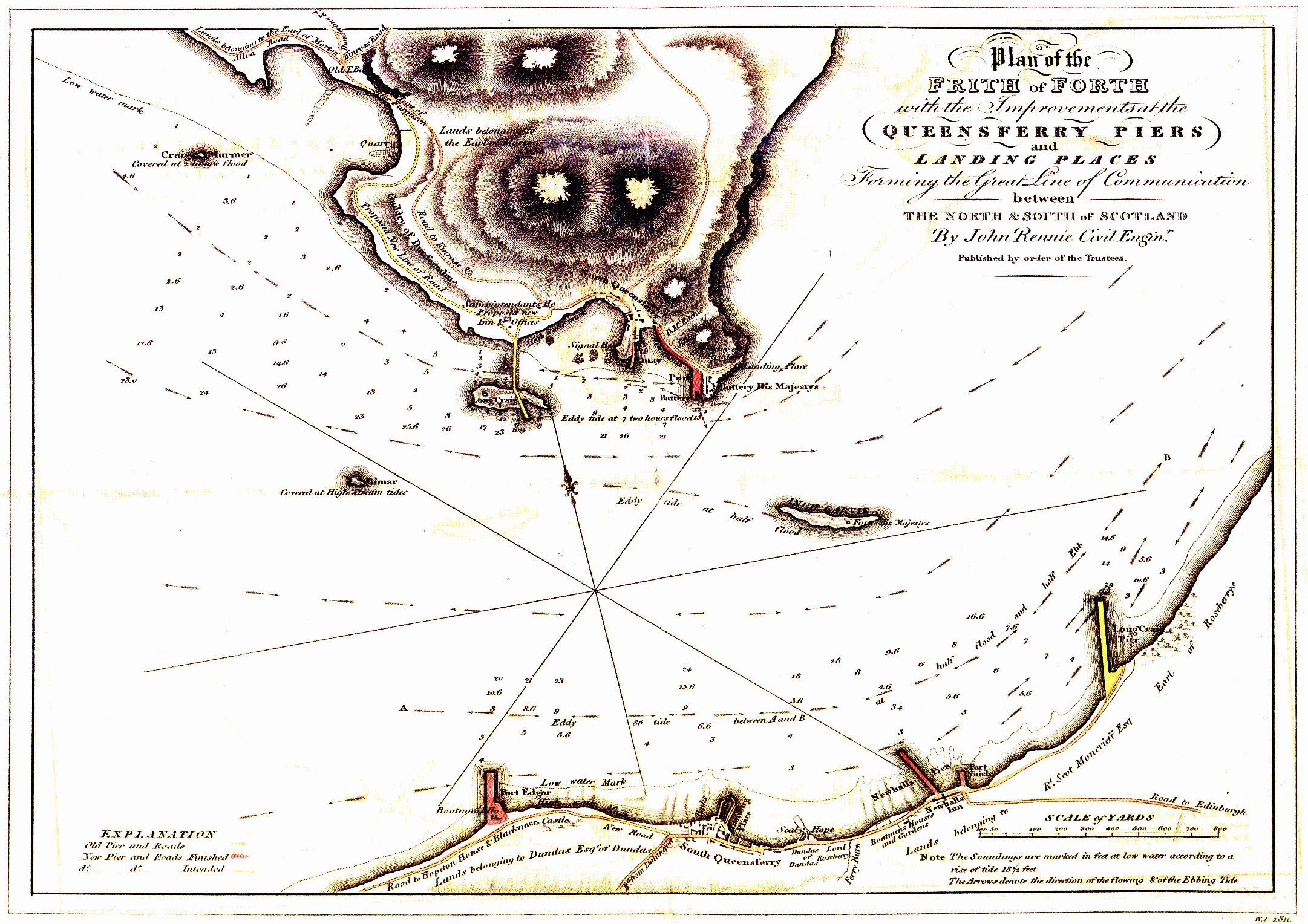The Ferries – 1809 – The Trustees
| < Early Crossings | Δ Index | 1820 – 1860 The Post Office, Competition, The Railways > |

The trustees appointed a management committee to take over the operation of the ferry, by buying the existing boats and employing the local boatmen.
They then embarked on an ambitious plan to improve the passage, and commissioned the civil engineer John Rennie, to oversee the work.
Here is his plan.

He built new roads on both sides, houses for the boatmen at South Queensferry, a house for the Superintendent and a combined waiting room and office in North Queensferry (this is Signal House, opposite the light tower.)

And of course he commissioned Robert Stevenson to provide guiding lights at the Town Pier in North Queensferry, and on the New Halls Pier (now the Hawes Pier) in South Queensferry.
Rennie’s plan was based on a line of four piers spread along the shore at South Queensferry, and a set of three piers on the peninsula at North Queensferry. This would allow sailing boats to cross directly in either direction, without tacking, regardless of the direction of the wind.
It was a wonderful plan, but it failed to anticipate the impact of new technology – the steam ship.
Within a few years, the rival “Broad Ferry” between Newhaven and Burntisland was using a steam ship and taking revenue from the Queensferry Passage.

The first Superintendent of the Passage was ex-Royal Navy Captain Scott.
He had recognized the limitations of the existing sailing boats and pressed the trustees to embrace the new technology of a steam ship.
The initial capital had been exhausted by the original improvements, but in 1820 the trustees experimented with a rented steam-ship – The “Lady of the Lake.”
These experiments showed that Rennie’s sloping piers, designed for small sailing boats of shallow draught, were unsuitable for the standard design of steam-ship, which could only operate at high tide. Captain Scott therefore designed a shallow-draught steam-ship the “Queen Margaret.” She entered service in 1821.
| < Early Crossings | Δ Index | 1820 – 1860 The Post Office, Competition, The Railways > |